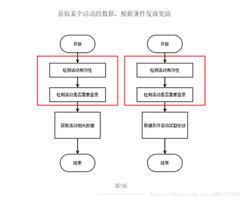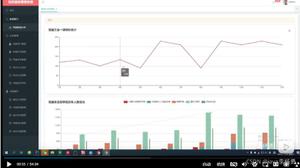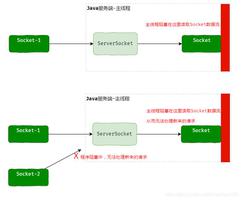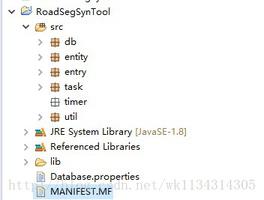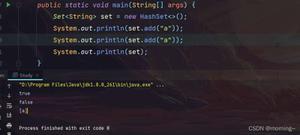如何使用Spring MVC 在Java应用程序上下文中标记?
我已经“暂时”创建了一个简单而基本的spring Web应用程序。我习惯将部署描述符作为简单的web.xml文件,然后将应用程序上下文作为xml文件。
不过,现在我想尝试仅使用Java文件创建整个Spring
Web应用程序。因此,我创建了WebApplicationInitializer而不是常规部署描述符,并且创建了使用@Configuration批注的应用程序上下文。
package dk.chakula.config;import javax.servlet.ServletContext;
import javax.servlet.ServletException;
import javax.servlet.ServletRegistration.Dynamic;
import org.springframework.web.WebApplicationInitializer;
import org.springframework.web.context.WebApplicationContext;
import org.springframework.web.context.support.AnnotationConfigWebApplicationContext;
import org.springframework.web.servlet.DispatcherServlet;
/**
*
* @author martin
* @since 12-1-2012
* @version 1.0
*/
public class Initializer implements WebApplicationInitializer {
@Override
public void onStartup(ServletContext servletContext)
throws ServletException {
registerDispatcherServlet(servletContext);
}
private void registerDispatcherServlet(final ServletContext servletContext) {
WebApplicationContext dispatcherContext = createContext(ChakulaWebConfigurationContext.class);
DispatcherServlet dispatcherServlet = new DispatcherServlet(dispatcherContext);
Dynamic dispatcher = servletContext.addServlet("dispatcher", dispatcherServlet);
dispatcher.setLoadOnStartup(1);
dispatcher.addMapping("/");
}
private WebApplicationContext createContext(final Class<?>... annotatedClasses) {
AnnotationConfigWebApplicationContext context = new AnnotationConfigWebApplicationContext();
context.register(annotatedClasses);
return context;
}
} //End of class Initializer
package dk.chakula.config;import org.springframework.context.annotation.Bean;
import org.springframework.context.annotation.ComponentScan;
import org.springframework.context.annotation.Configuration;
import org.springframework.web.servlet.config.annotation.EnableWebMvc;
import org.springframework.web.servlet.view.UrlBasedViewResolver;
import org.springframework.web.servlet.view.tiles2.TilesConfigurer;
import org.springframework.web.servlet.view.tiles2.TilesView;
/**
*
* @author martin
* @since 12-01-2013
* @version 1.0
*/
@Configuration
@EnableWebMvc
@ComponentScan("dk.chakula.web")
public class ChakulaWebConfigurationContext {
@Bean
public TilesConfigurer setupTilesConfigurer() {
TilesConfigurer configurer = new TilesConfigurer();
String[] definitions = {"/layout/layout.xml"};
configurer.setDefinitions(definitions);
return configurer;
}
@Bean
public UrlBasedViewResolver setupTilesViewResolver() {
UrlBasedViewResolver viewResolver = new UrlBasedViewResolver();
viewResolver.setViewClass(TilesView.class);
return viewResolver;
}
} //End of class ChakulaWebConfigurationContext
我的问题是我似乎找不到“隔离”到包含图像,CSS JavaScript等资源文件夹的映射的方法。当我的应用程序上下文在Java中时。
在普通的XML应用程序上下文中,我使用了这个标签来隔离到/ resources /的映射。
<mvc:resources mapping="/resources/**" location="/resources/" />我该怎么做,以便我的Web应用程序可以使用我的图像,CSS等。
回答:
为了能够在Spring MVC应用程序中提供静态资源,您需要两个XML标签:<mvc:resources/>和<mvc:default-
servlet-handler/>。在基于Java的Spring配置中,相同的是:
@Configuration@EnableWebMvc
public class WebMvcConfig extends WebMvcConfigurerAdapter {
// equivalents for <mvc:resources/> tags
@Override
public void addResourceHandlers(ResourceHandlerRegistry registry) {
registry.addResourceHandler("/css/**").addResourceLocations("/css/").setCachePeriod(31556926);
registry.addResourceHandler("/img/**").addResourceLocations("/img/").setCachePeriod(31556926);
registry.addResourceHandler("/js/**").addResourceLocations("/js/").setCachePeriod(31556926);
}
// equivalent for <mvc:default-servlet-handler/> tag
@Override
public void configureDefaultServletHandling(DefaultServletHandlerConfigurer configurer) {
configurer.enable();
}
// ... other stuff ...
}
请注意,由于使用了@EnableWebMvc注释,因此无需直接扩展WebMvcConfigurationSupport,而只需扩展WebMvcConfigurerAdapter。有关详细信息,请参见JavaDoc
for @EnableWebMvc。
以上是 如何使用Spring MVC 在Java应用程序上下文中标记? 的全部内容, 来源链接: utcz.com/qa/402313.html

